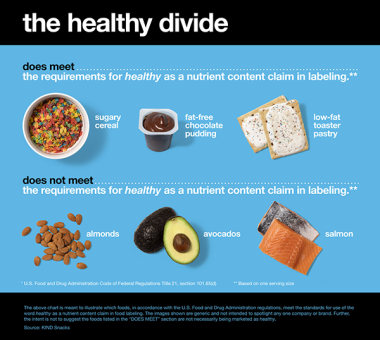Daniel Lubetzky had the lofty goal of starting a company both economically sustainable and socially impactful. In 2004, after ten years as a social entrepreneur, he started KIND Snacks. Now valued at more than 700M USD, the company still follows his vision to build a community, a movement, and ultimately a company with the goal of doing the right thing.
It was early in his career, however, when Daniel Lubetzky learned the hard way that a mission does not sell a product, the product sells the product. Back in the early Nineties when he was starting PeaceWorks, Lubetzky methodically walked the streets of Manhattan selling dried tomato spreads. Peaceworks produced Mediterranean spreads and other goods, but Lubetzky’s pitch focused on the company’s model to try to promote peace in the Middle East by sourcing and partnering with companies from regions in conflict — Israel, Palestine, Egypt, Turkey, Indonesian, and Sri Lanka. He wouldn’t leave a store until they either bought his product or told him what he should do to improve it. Through these interactions with store buyers he realized Middle East peace wasn’t selling the spreads, the spreads were selling the spreads. So, he soon put quality first, even when it was more time consuming and expensive.

As Lubetzky himself notes in his book Do the KIND Thing, “Yes, increasingly consumers are focused on ensuring that the companies they buy products or services from are genuine members of their communities, doing their part to make this a better world. But that is not a substitute for delivering on the functional merits. First and foremost, the product must stand on its own.”
After a decade of positive press with KIND snacks, it came as a surprise to Lubetzky when the FDA sent KIND a letter this year indicating that four of its bars were in violation of marketing labeling guidelines for the use of the word healthy and the plus sign.
Like many others would do, KIND responded immediately and adjusted its labels. Unlike others, they took the slap on the wrist as a way to start a conversation on what it means to eat healthy and how the FDA guidelines may be misleading. On December 1, 2015, KIND submitted a citizen petition to the FDA, asking the agency to update their requirements related to food labeling in order to reflect a shift in dietary guidelines that focus on whole foods that help achieve and maintain wellness, rather than on specific nutrient levels.

This move, which if made by a different snack company could look like just another lobbying effort, has been embraced by KIND’s stakeholders as a way of doing something good for the community: aiming to help people recognize and understand distinctions between whole foods and processed, low-fat “healthy” foods. This permission is given because the snack company has built its brand with the hope of spreading kindness. One example of this is the #kindawesome initiative –part of the company’s KIND movement- that is“a little program we cooked up to celebrate kind acts everywhere, spot a kind act, give a KIND snack. On us!” Anyone can send KIND snacks to recognize an act of kindness via twitter, Facebook, or email to people they’ve spotted doing everyday kind things.
See Daniel Lubetzky at BRITE ’16 (March 7-8, NYC) to learn more about his story and KIND.
BY GABRIELA TORRES PATIÑO


 Educating customers about the use of new products will make or break your brand. In Nakumatt stores, for example, shoppers tried to put black mascara on their lips because they didn’t know what it was for. Now, according to the
Educating customers about the use of new products will make or break your brand. In Nakumatt stores, for example, shoppers tried to put black mascara on their lips because they didn’t know what it was for. Now, according to the 



